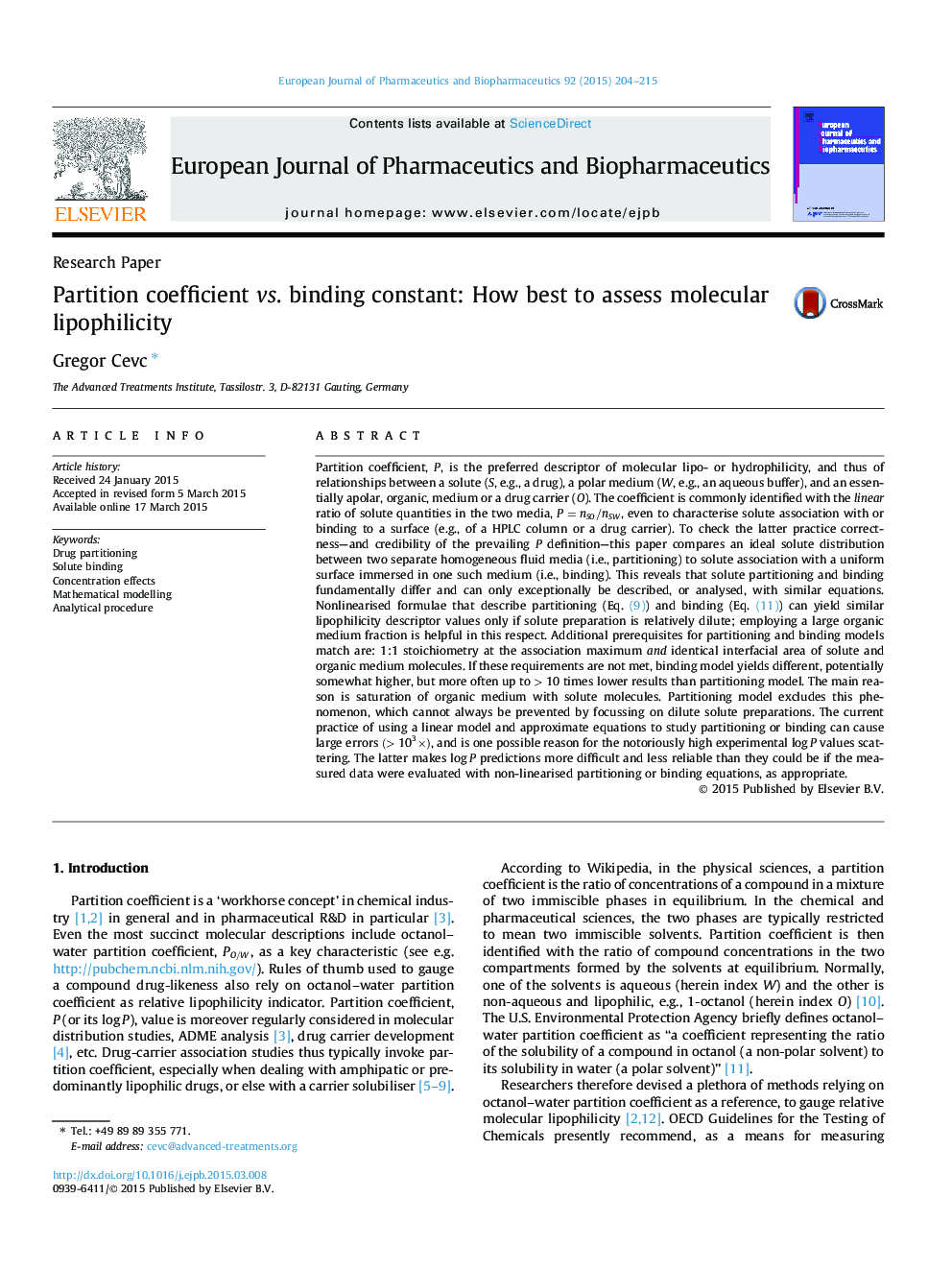| کد مقاله | کد نشریه | سال انتشار | مقاله انگلیسی | نسخه تمام متن |
|---|---|---|---|---|
| 2083352 | 1545333 | 2015 | 12 صفحه PDF | دانلود رایگان |
Partition coefficient, P, is the preferred descriptor of molecular lipo- or hydrophilicity, and thus of relationships between a solute (S, e.g., a drug), a polar medium (W, e.g., an aqueous buffer), and an essentially apolar, organic, medium or a drug carrier (O). The coefficient is commonly identified with the linear ratio of solute quantities in the two media, P=nSO/nSWP=nSO/nSW, even to characterise solute association with or binding to a surface (e.g., of a HPLC column or a drug carrier). To check the latter practice correctness—and credibility of the prevailing P definition—this paper compares an ideal solute distribution between two separate homogeneous fluid media (i.e., partitioning) to solute association with a uniform surface immersed in one such medium (i.e., binding). This reveals that solute partitioning and binding fundamentally differ and can only exceptionally be described, or analysed, with similar equations. Nonlinearised formulae that describe partitioning (Eq. (9)) and binding (Eq. (11)) can yield similar lipophilicity descriptor values only if solute preparation is relatively dilute; employing a large organic medium fraction is helpful in this respect. Additional prerequisites for partitioning and binding models match are: 1:1 stoichiometry at the association maximum and identical interfacial area of solute and organic medium molecules. If these requirements are not met, binding model yields different, potentially somewhat higher, but more often up to >10>10 times lower results than partitioning model. The main reason is saturation of organic medium with solute molecules. Partitioning model excludes this phenomenon, which cannot always be prevented by focussing on dilute solute preparations. The current practice of using a linear model and approximate equations to study partitioning or binding can cause large errors (>103×)(>103×), and is one possible reason for the notoriously high experimental logPlogP values scattering. The latter makes logPlogP predictions more difficult and less reliable than they could be if the measured data were evaluated with non-linearised partitioning or binding equations, as appropriate.
Figure optionsDownload high-quality image (227 K)Download as PowerPoint slide
Journal: European Journal of Pharmaceutics and Biopharmaceutics - Volume 92, May 2015, Pages 204–215
